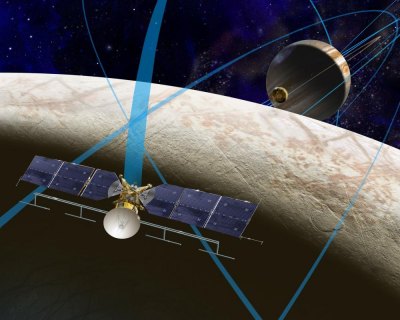In Brief: NASA mission could focus on Europa

For years, researchers have speculated about Jupiter’s moon, Europa. In 2013, NASA reported that the Hubble Space Telescope had spotted water vapor above the moon’s south polar region. But one year later, researchers said the plumes were likely to be intermittent.
Now, NASA is talking about getting a closer look. A future mission would send a “radiation-tolerant spacecraft” into Jupiter's orbit to do flybys of Europa. Earlier this month, Charles Bolden, NASA’s administrator, said the space agency will begin selecting instruments for the spacecraft this spring and move toward the next phase of the project.
In September, the space agency chose proposals from 10 universities for satellite concepts that would be part of a Europa mission. The so-called “CubeSats,” as defined by NASA, are cube-shaped satellites 4 inches long, weighing about 3 pounds.
Such small probes could be released around Jupiter to make measurements and increase our understanding of Europa.
The president’s budget request summary -- which makes mention of the Europa mission -- shows an overall $18.5 billion budget for NASA.
THIS OLD SPACE STATION: The International Space Station is undergoing a little remodeling, as it zooms by some 200 miles above the Earth.
Astronauts Barry Wilmore and Terry Virts completed a spacewalk on Feb. 21 and have scheduled another outdoor adventure for Feb. 25 as part of a reconfiguration to enable U.S. commercial crew vehicles to dock at the space station in the coming years.
NASA's space shuttle program ended in July 2011, leaving American astronauts dependent on Russian spacecraft for transportation to the station. Officials have said they would like to have private companies do the job instead. In September, NASA awarded The Boeing Co. and SpaceX a total of $6.8 billion in contracts to transport astronauts to the station.
Related:
Hubble sees evidence of vapor off Jovian moon
Boeing, SpaceX to fly astronauts to station

